Affiliate links on Android Authority may earn us a commission. Learn more.
HUAWEI Mate 10 and Mate 10 Pro vs the competition
October 19, 2017
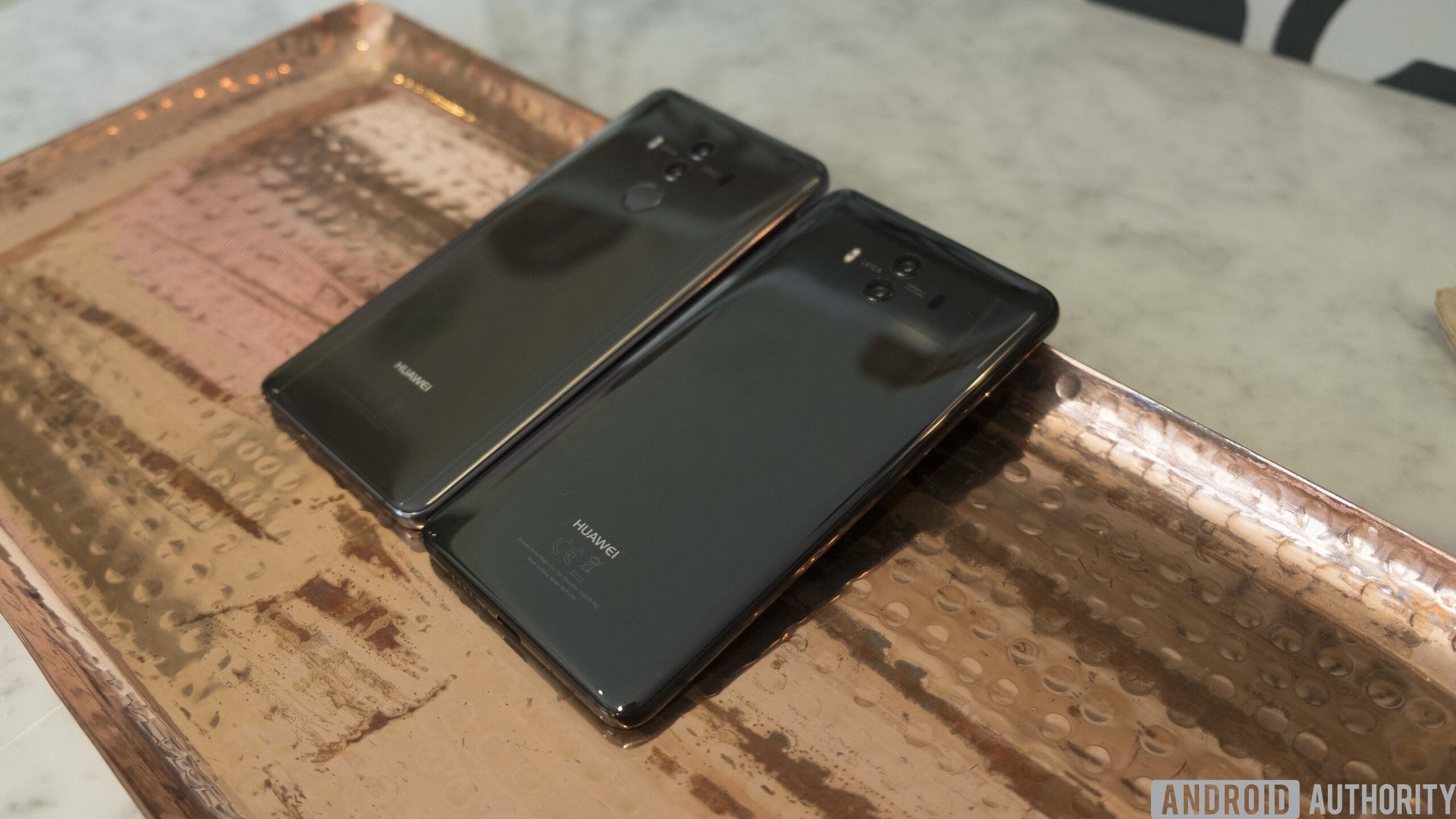
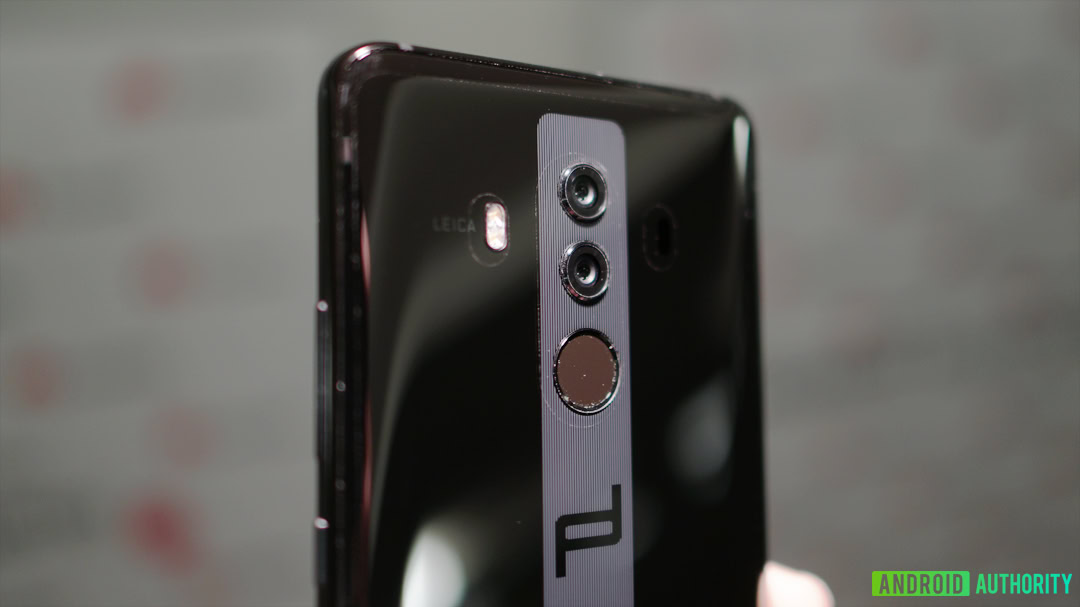
The HUAWEI Mate 10 and 10 Pro likely won’t grab as much attention on the market as many of their rivals, but they are still fantastic smartphones. Both feature a premium bezel-less design, top-of-the-line specs, and the latest version of Android. But just how exactly do they stack up against the competition?
The two smartphones go head to head with a number of phablets including the Samsung Galaxy Note 8, LG V30, and Google Pixel 2 XL. In this post, we compare all these devices in terms of specs, design, and more to give you a better idea of which one might be more suitable for your needs.
Design
The Mate 10 and 10 Pro are almost identical in terms of looks with a few exceptions. They both have a bezel-less design and a glass back with curved sides. The two devices also sport a horizontal stripe across the cameras that looks gorgeous and makes them stand out from the crowd.
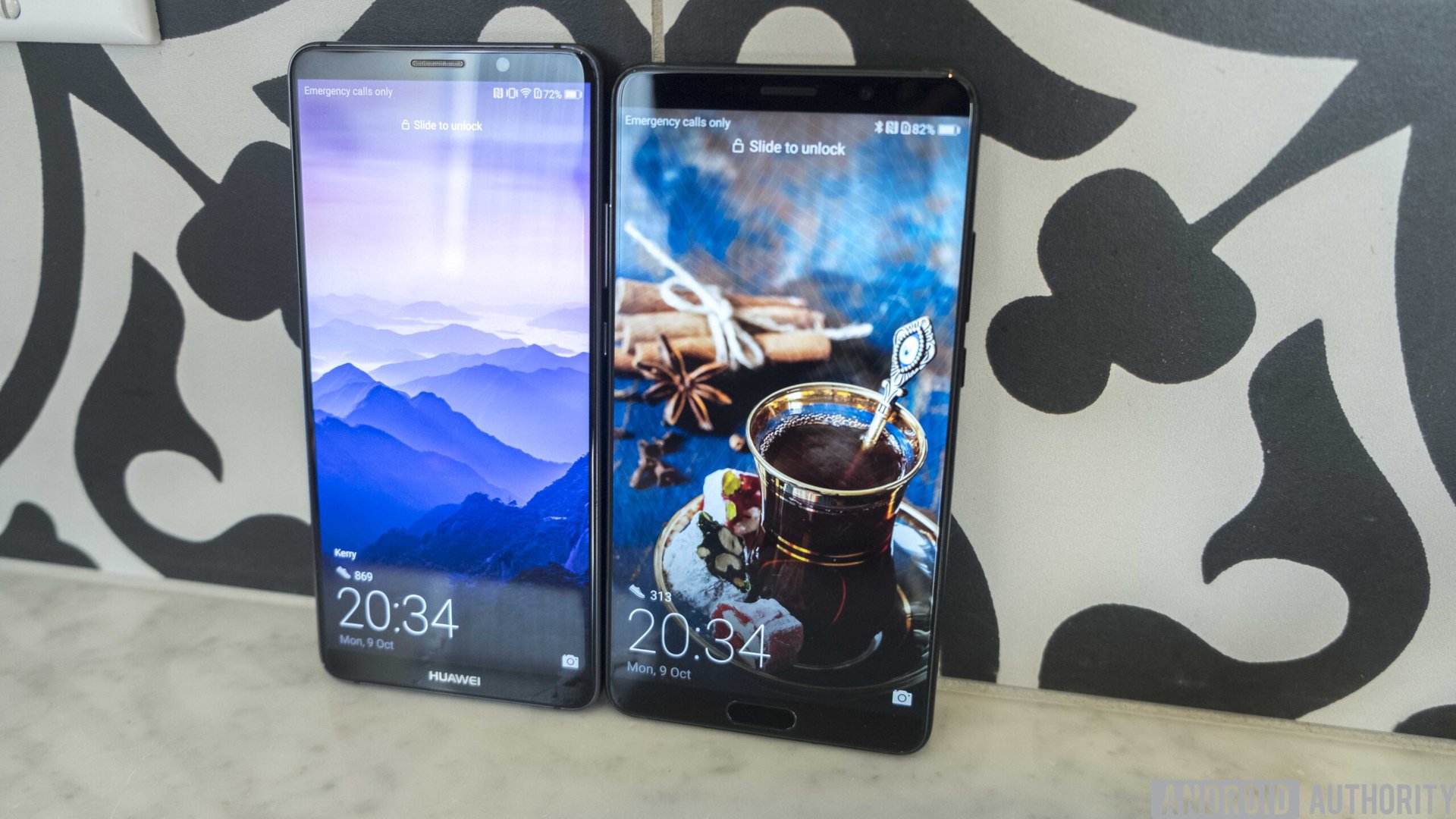
However, the Mate 10 is slightly more compact due to its smaller display and has the fingerprint scanner on the front, while the Pro model has it on the back. Which solution is better depends on who you ask, but the fact is that it’s easier to unlock a device with a front-mounted fingerprint scanner while it’s placed on a table, as you don’t have to pick it up.
Just like the two Mate handsets, the Galaxy Note 8, Pixel 2 XL, and LG V30 all have thin bezels around the screen, but each of them still has a unique design.
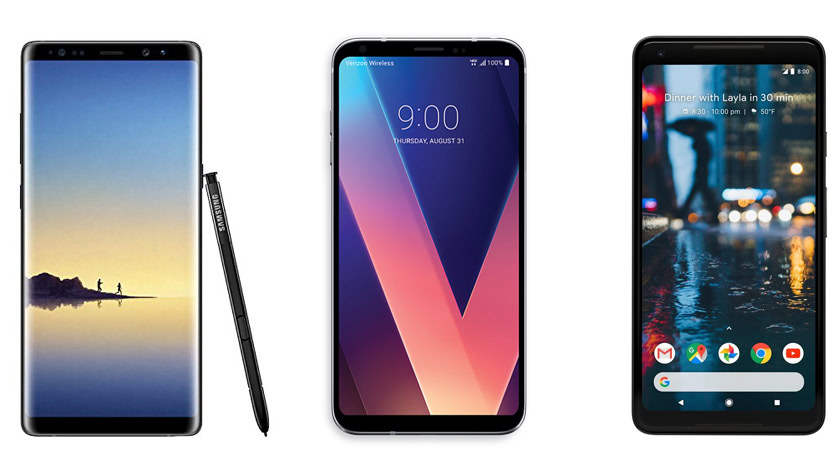
Samsung’s phablet has a curved display that’s easy on the eyes and has proven to be quite popular among consumers. The device also comes with a glass back but has a weirdly positioned fingerprint scanner — next to the cameras — just like the Galaxy S8.
The Pixel 2 XL, on the other hand, has a metal body with a small glass window at the back that gives it a bit more character. Nevertheless, it offers a very simplistic design that doesn’t really grab your attention, unless you opt for the funky Black & White color option that has a black front, a black and white back, and an orange power button.
The V30 doesn’t try to be as fancy as the rest of the phablets, as it just sticks to the basics. It has a clean front without the company’s branding, while the glass back is simple yet stylish and elegant at the same time.
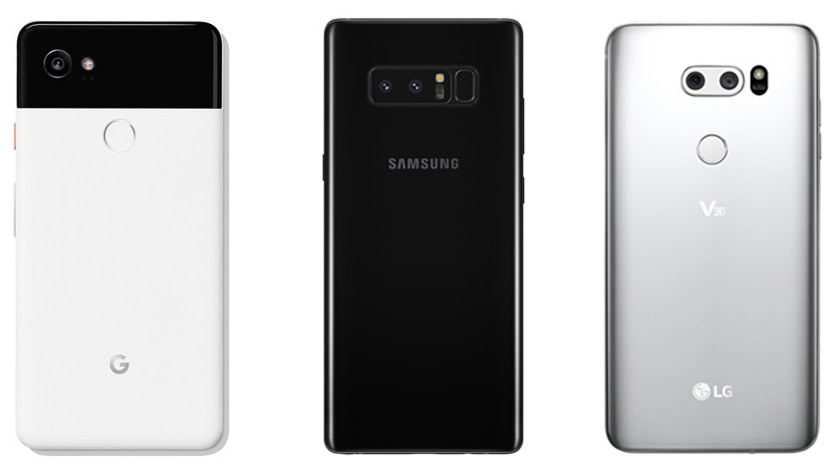
So, which one is the sexiest? Design is a very subjective topic to talk about, so proclaiming one as the ultimate winner is impossible. But in my opinion, the Mate 10 wins this round thanks to its front-mounted fingerprint scanner and that gorgeous stripe on the back.
Specs
Starting with the Mate 10, the device sports a 5.9-inch IPS LCD display with a resolution 2,560 x 1,440 pixels and a 16:9 aspect ratio. It’s powered by HUAWEI’s latest and greatest Kirin 970 chipset that has a Neural Processing Unit (NPU), which reportedly offers 25x better performance and 50x greater energy efficiency on AI-related tasks compared to the CPU. It allows the device to offer you smart tips, among other things, like suggesting you turn Eye Comfort mode on when reading in a dark environment.
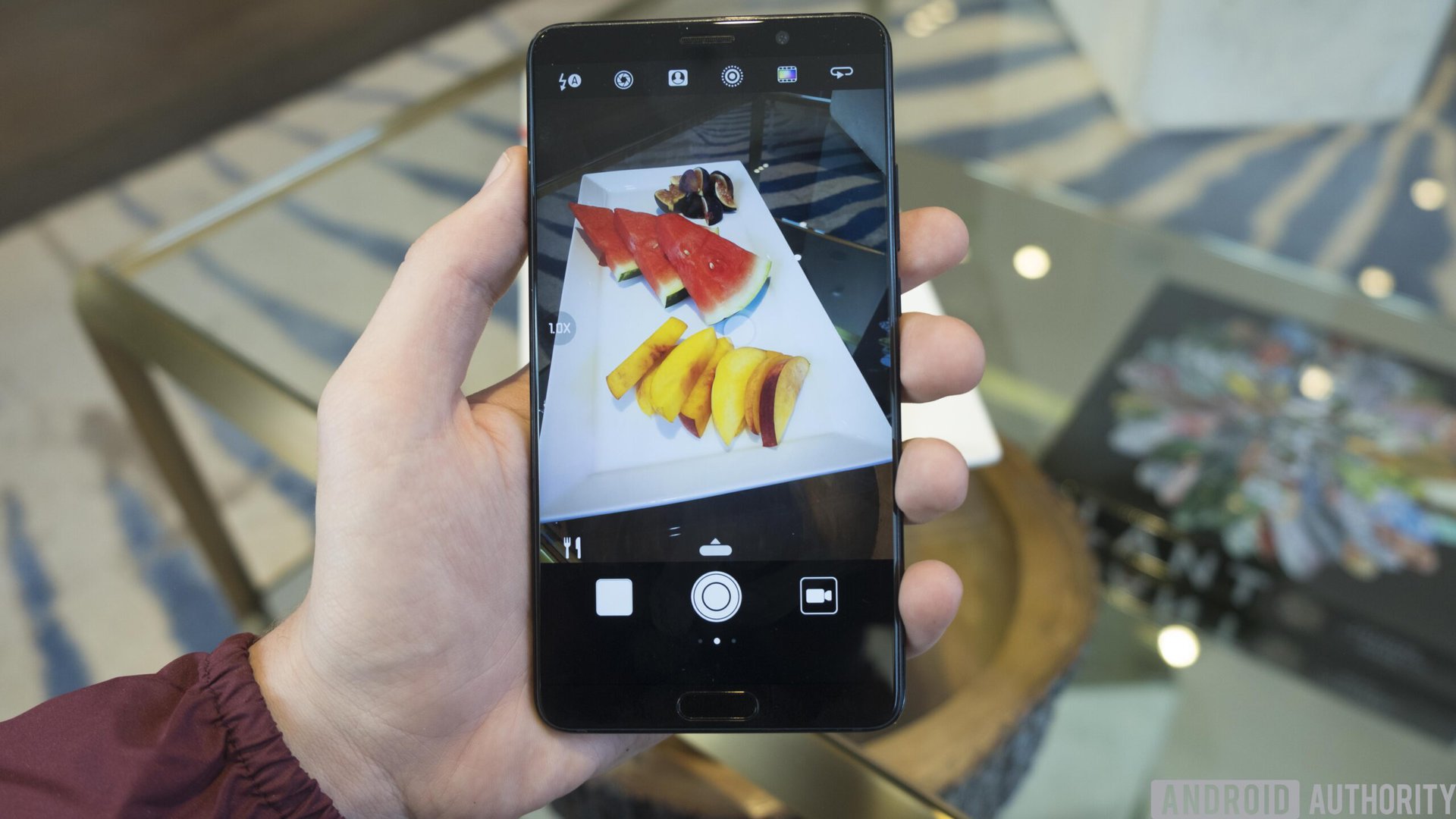
The smartphone has 4 GB of RAM, 64 GB of expandable storage, and packs a 4,000 mAh battery with the company’s SuperCharge technology that promises to get it up to 58 percent in just 30 minutes of charging. It’s equipped with a dual-camera setup on the back featuring 20 and 12 MP sensors (monochrome + RGB) both of which have an f/1.6 aperture. The Mate 10 also has an 8 MP selfie snapper on board, comes with a headphone jack, and runs Android 8.0 Oreo.
The Pro model, on the other hand, offers a slightly larger 6-inch OLED display with a lower resolution of 2,160 x 1,080 pixels and an 18:9 aspect ratio. Just like its smaller brother, it offers 4 GB of RAM and 64 GB of storage but also comes in a beefed-up version with 6 GB of RAM and 128 GB of space. The device is resistant to water thanks to its IP67 rating but doesn’t have a headphone jack or a microSD card slot on board. The rest of the specs including the chipset, camera, and battery are the same as those of the Mate 10.
When looking at their rivals, both the Pixel 2 XL and LG V30 have 6-inch display OLED displays with an 18:9 aspect ratio like the Mate 10 Pro, but offer a higher resolution of 2,880 x 1,440 pixels. They are powered by the latest Snapdragon 835 chipset and have 4 GB of RAM. Samsung’s phablet is the largest of the pack with its 6.3-inch Super AMOLED screen (2,960 x 1,440), which has an 18.5:9 aspect ratio. It comes with the Snapdragon 835 or Exynos 8895 processor under the hood (depends on the market) along with 6 GB of RAM.
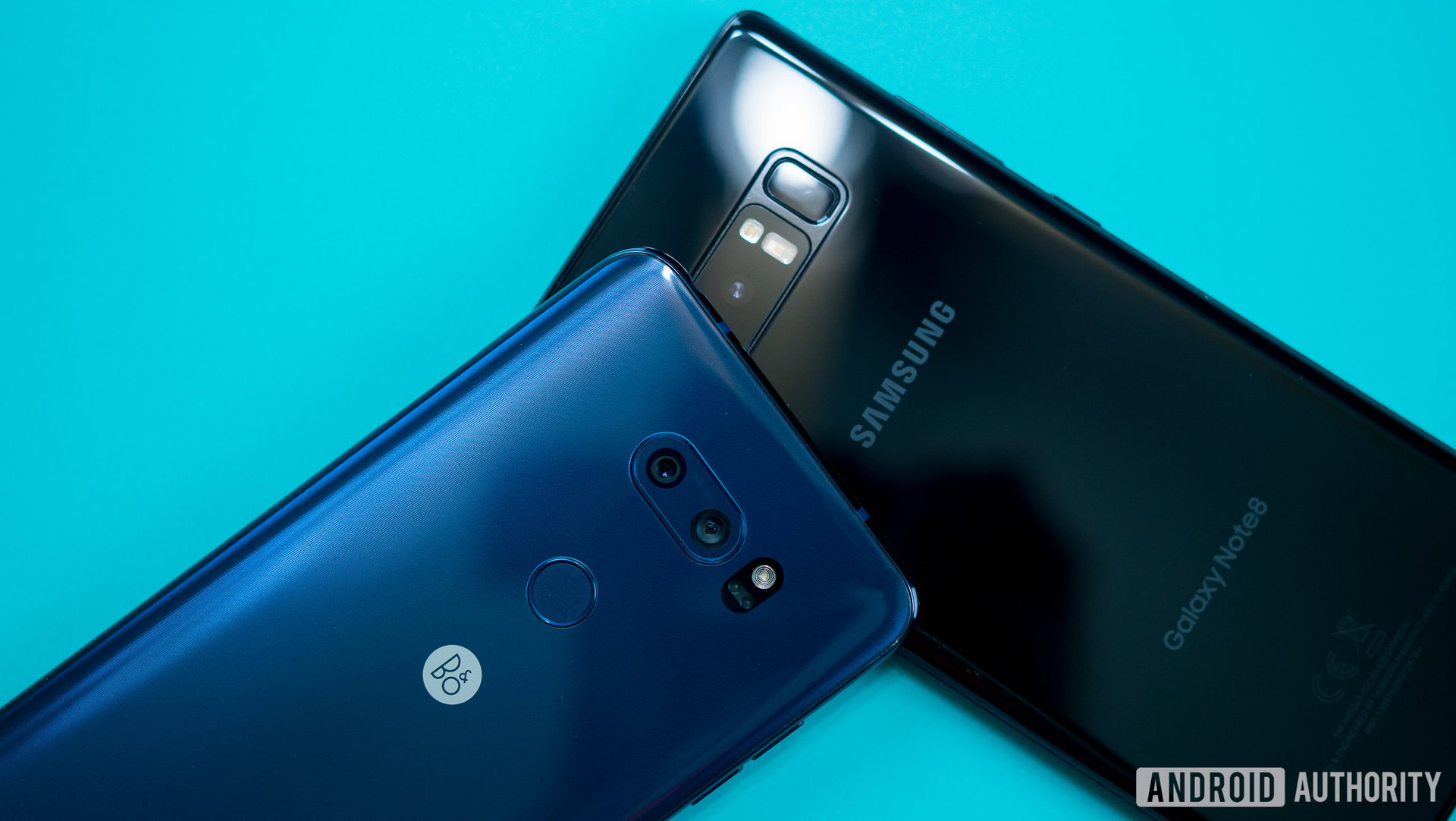
Each device has an X factor that makes it stand out from the crowd.
In terms of power, all smartphones are capable of handling just about anything you can throw at them, despite the fact some offer less RAM than others. However, each device does have an X factor that makes it stand out from the crowd.
The Galaxy Note 8, for example, has the popular S Pen that pops out from the bottom and gives you another way of interacting with the device. It also has the Infinity Display that’s curved on the sides and is the first Samsung device to come with a dual-camera setup (two 12 MP sensors).
The V30 is a great option for those who love listening to music, as it equipped with a Quad DAC for an improved audio experience. It also sports a dual-camera setup (16 + 13 MP) with a standard/wide-angle lens combo.
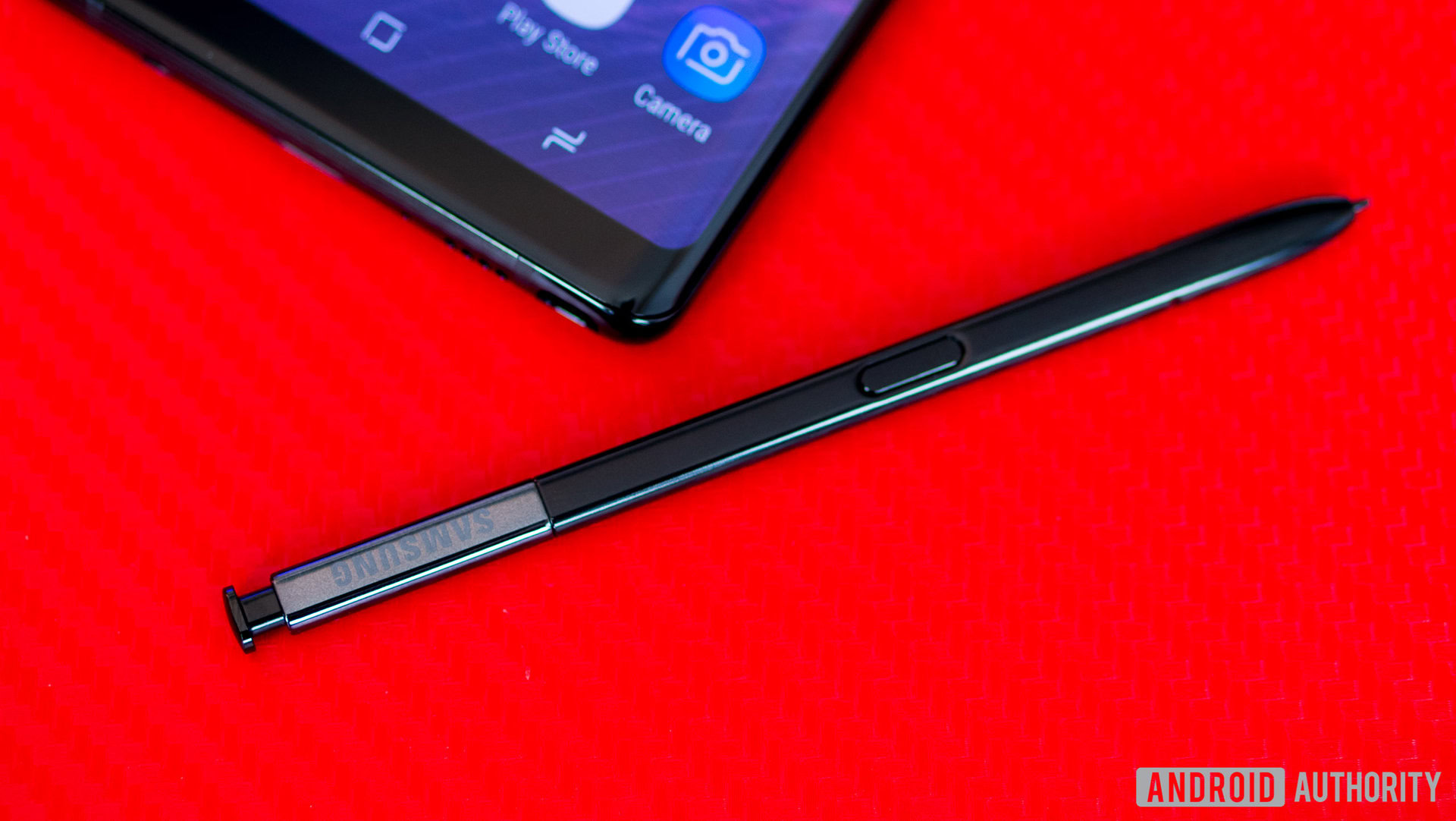
The biggest advantage of the Pixel 2 XL is that it runs stock Android, which means it will be one of the first to get updated to the latest versions of the OS. It also features dual front-facing speakers and although it doesn’t have a dual-camera setup, it still excels in the photography department. The smartphone has received a DxOMark score of 98 — the highest ever — putting it ahead of all the competition, at least according to DxOMark. Additionally, the Pixel 2 XL has the Active Edge feature that lets you activate Google’s Assistant by squeezing its sides. However, it doesn’t have a headphone jack, which might be a deal breaker for some.
All three devices are resistant to water as well as dust and available in multiple storage variants — check the specs table below for more info.
| HUAWEI Mate 10 | HUAWEI Mate 10 Pro | Google Pixel 2 XL | Samsung Galaxy Note 8 | LG V30 | |
|---|---|---|---|---|---|
Display | HUAWEI Mate 10 5.9-inch IPS LCD 2,560 x 1,440 resolution 499 ppi 16:9 aspect ratio | HUAWEI Mate 10 Pro 6.0-inch OLED 2,160 x 1,080 resolution 402 ppi 18:9 aspect ratio | Google Pixel 2 XL 6.0-inch P-OLED 2,880 x 1,440 resolution 538 ppi 18:9 aspect ratio | Samsung Galaxy Note 8 6.3-inch Super AMOLED 2,960 x 1,440 resolution 521 ppi 18.5:9 aspect ratio | LG V30 6.0-inch P-OLED 2,880 x 1,440 resolution 538 ppi 18:9 aspect ratio |
Processor | HUAWEI Mate 10 Kirin 970 | HUAWEI Mate 10 Pro Kirin 970 | Google Pixel 2 XL Snapdragon 835 | Samsung Galaxy Note 8 Snapdragon 835 or Exynos 8895 | LG V30 Snapdragon 835 |
GPU | HUAWEI Mate 10 Mali-G72 MP12 | HUAWEI Mate 10 Pro Mali-G72 MP12 | Google Pixel 2 XL Adreno 540 | Samsung Galaxy Note 8 Adreno 540 or Mali-G71 MP20 | LG V30 Adreno 540 |
RAM | HUAWEI Mate 10 4 GB | HUAWEI Mate 10 Pro 4/6 GB | Google Pixel 2 XL 4 GB | Samsung Galaxy Note 8 6 GB | LG V30 4 GB |
Storage | HUAWEI Mate 10 64 GB Expandable up to 256 GB | HUAWEI Mate 10 Pro 64/128GB No microSD card slot | Google Pixel 2 XL 64/128 GB No microSD slot | Samsung Galaxy Note 8 64/128/256 GB Expandable up to 256 GB | LG V30 64/128 GB Expandable up to 256 GB |
Cameras | HUAWEI Mate 10 Rear cameras: 20 MP Monochrome + 12 MP RGB sensors f/1.6 in both lenses, OIS (color sensor only), BSI CMOS, dual-LED flash, PDAF+CAF+Laser+Depth auto focus, 2x Hybrid Zoom, 4K video recording Front camera: 8 MP sensor with an f/2.0 aperture, fixed focus | HUAWEI Mate 10 Pro Rear cameras: 20 MP Monochrome + 12 MP RGB sensors f/1.6 in both lenses, OIS (color sensor only), BSI CMOS, dual-LED flash, PDAF+CAF+Laser+Depth auto focus, 2x Hybrid Zoom, 4K video recording Front camera: 8 MP sensor with an f/2.0 aperture, fixed focus | Google Pixel 2 XL Rear camera: 12.2 MP sensor, 1.4 μm pixel size, and f/1.8 aperture, laser + dual pixel phase detection autofocus, OIS, EIS Front camera: 8 MP sensor, 1.4 μm pixel size, and f/2,4 aperture, fixed focus | Samsung Galaxy Note 8 Rear camera: 12 MP sensor f/1.7 aperture + 12 MP f/2.4 sensor with OIS & 2x zoom Front camera: 8 MP sensor, f/1.7 aperture, autofocus, 1.22 µm pixel size | LG V30 Rear camera: 16 MP sensor, f/1.6 aperture, OIS, 3-axis, laser & phase detection autofocus) + 13 MP f/1.9, LED flash Front camera: 5 MP sensor, f/2.2 aperture, 1.12 µm pixel size |
3.5 mm headphone jack | HUAWEI Mate 10 Yes | HUAWEI Mate 10 Pro No | Google Pixel 2 XL No | Samsung Galaxy Note 8 Yes | LG V30 Yes |
Battery | HUAWEI Mate 10 4,000 mAh Non-removable | HUAWEI Mate 10 Pro 4,000 mAh Non-removable | Google Pixel 2 XL 3,520 mAh Non-removable | Samsung Galaxy Note 8 3,300 mAh Non-removable | LG V30 3,300 mAh Non-removable |
IP rating | HUAWEI Mate 10 None | HUAWEI Mate 10 Pro IP67 | Google Pixel 2 XL IP67 | Samsung Galaxy Note 8 IP68 | LG V30 IP68 |
Software | HUAWEI Mate 10 Android 8.0 Oreo | HUAWEI Mate 10 Pro Android 8.0 Oreo | Google Pixel 2 XL Android 8.0 Oreo | Samsung Galaxy Note 8 Android 7.1.1 Nougat | LG V30 Android 7.1.2 Nougat |
Colors | HUAWEI Mate 10 Mocha Brown, Black, Champagne Gold, Pink Gold | HUAWEI Mate 10 Pro Midnight Blue, Titanium Gray, Mocha Brown, Pink Gold | Google Pixel 2 XL Just Black, Black & White | Samsung Galaxy Note 8 Midnight Black, Orchid Gray, Maple Gold, Deep Sea Blue | LG V30 Aurora Black, Cloud Silver, Moroccan Blue, Lavender Violet |
Dimensions and weight | HUAWEI Mate 10 150.5 x 77.8 x 8.2 mm 186 grams | HUAWEI Mate 10 Pro 154.2 x 74.5 x 7.9 mm 178 grams | Google Pixel 2 XL 157.9 x 76.7 x 7.9 mm 175 grams | Samsung Galaxy Note 8 162.5 x 74.8 x 8.6 mm 195 grams | LG V30 151.7 x 75.4 x 7.4 mm 158 grams |
Price
Just like its predecessor, the Mate 10 will set you back €699 (around $825) once it goes on sale later this month. The high-end version of the Mate 10 Pro with 6 GB of RAM, which should be released mid-November, will be even more expensive with its price tag of €799 (around $945). However, once — or if — the two devices come to the US, their prices will likely be lower.
The Samsung Galaxy Note 8 is only available with 64 GB in the US and is one of the most expensive flagships on the market right now with the unlocked model retailing for $929. The 64 GB variant of the Pixel 2 XL can be yours for $849, while the 128 GB version is priced at $949. The LG V30, on the other hand, will set you back around $800 and comes with 64 GB of storage.
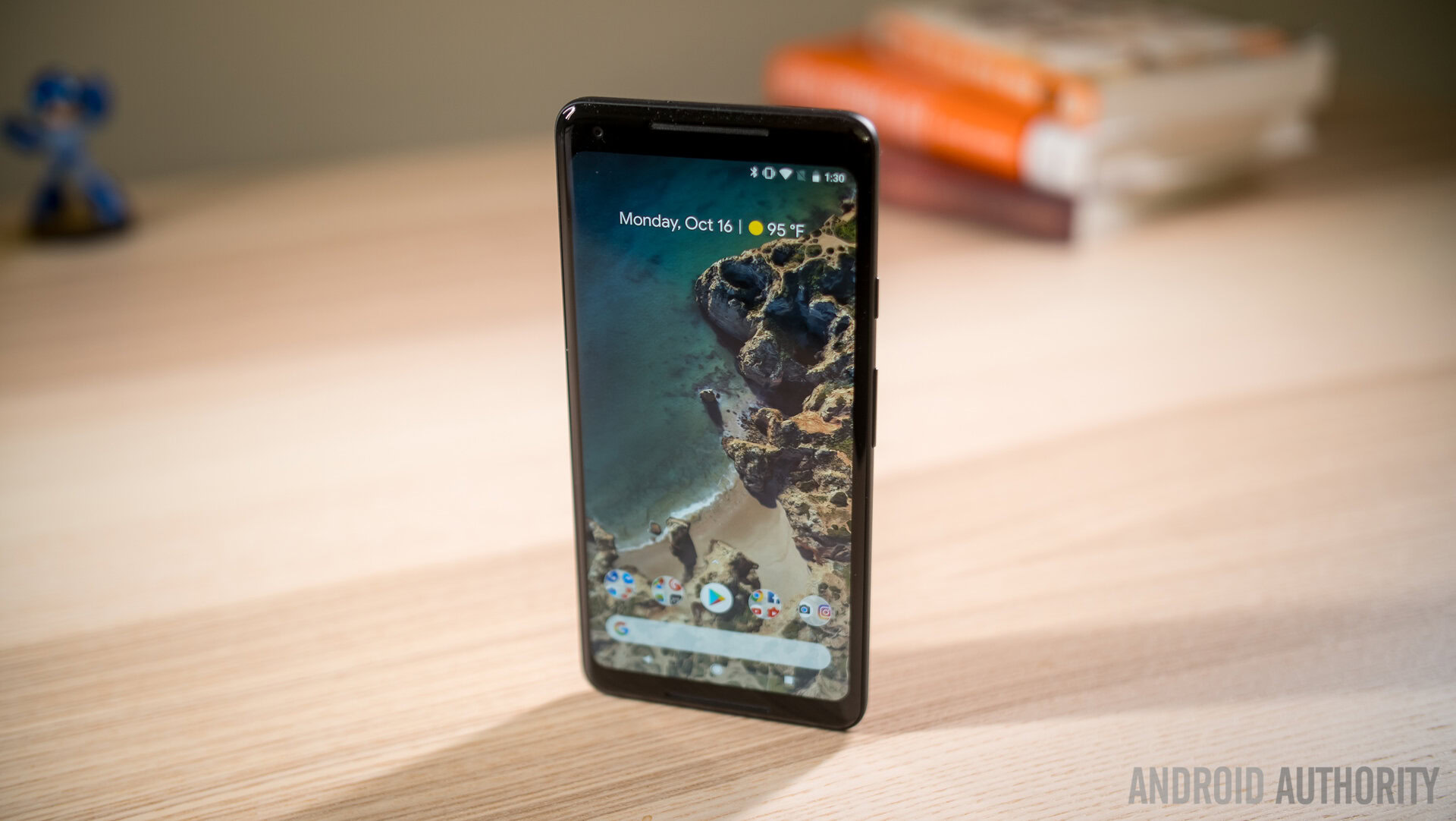
All of the devices are expensive, but the V30 is the most affordable option for now. But that might change once the Mate 10 makes its way across the pond. As a refresher, its predecessor launched in the US for $600. The Mate 10 Pro will likely be cheaper in the US than the Note 8 — just like in Europe — which means Samsung’s phablet is the most expensive one you can get. But just like the V30, we’ll likely see it on sale a number of times over the next year, which is something we can’t say for the Pixel 2 XL.
Final thoughts
So, which device should you get? Unfortunately, there’s no easy way to answer that question. It really depends on what you’re looking for and how much you’re willing to spend. The two Mate smartphones have the best design in my opinion and are equipped with a number of features powered by artificial intelligence. They do have their drawbacks, as the Mate 10 is not waterproof and the Pro model doesn’t have a headphone jack.
Opt for the V30 if the audio experience is important to you.
Go with the V30 if the audio experience is important to you, which is also more affordable than the Pixel 2 XL and Note 8. The latter impresses with its large 6.3-inch display with curved edges and the S Pen but has a weirdly positioned fingerprint scanner that not only looks strange but also seems impractical.
The Pixel 2 XL, on the other hand, is the only smartphone with a metal back and a single primary camera, although it can still produce fantastic photos based on its DxOMark score. The device stands out from the crowd thanks to its Active Edge feature and stock Android, which is extremely popular among a number of users. It has its drawbacks just like any other smartphone, as it doesn’t feature a headphone jack or a microSD card slot and has a boring design.
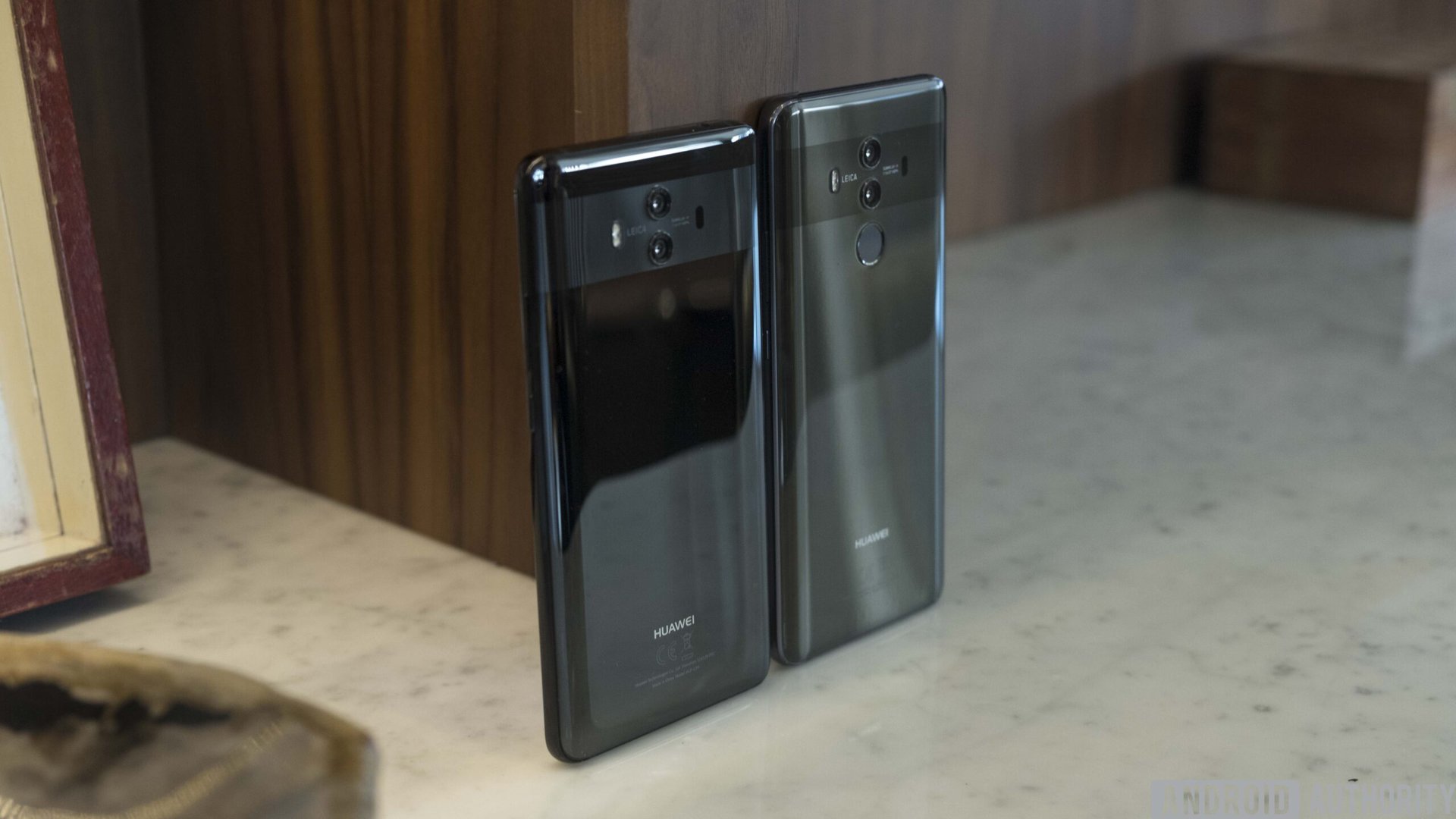
To sum up, the new Mate smartphones aren’t really better or worse than rival phablets, but they are different in many ways. So the question whether or not they are worth getting over the Galaxy Note 8, LG V30, or the Pixel 2 XL is one you’ll have to answer for yourself.
Which smartphone would you choose? Let us know in the comments.